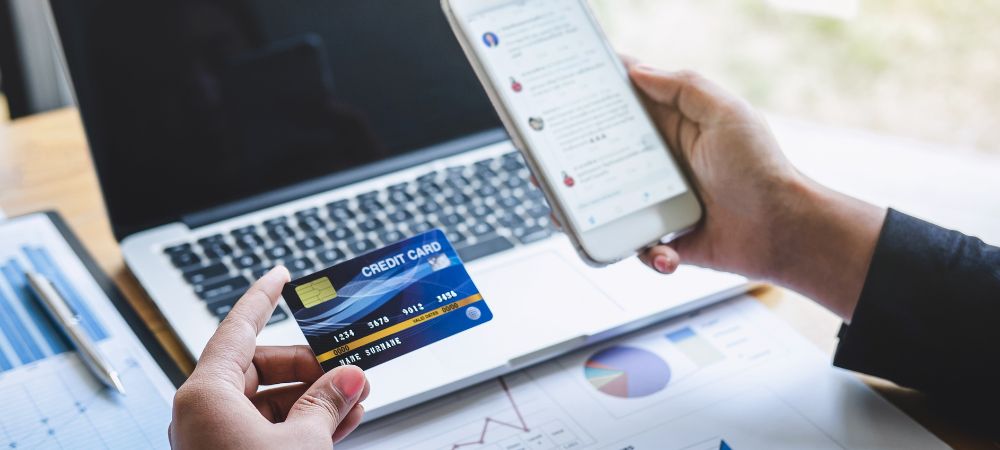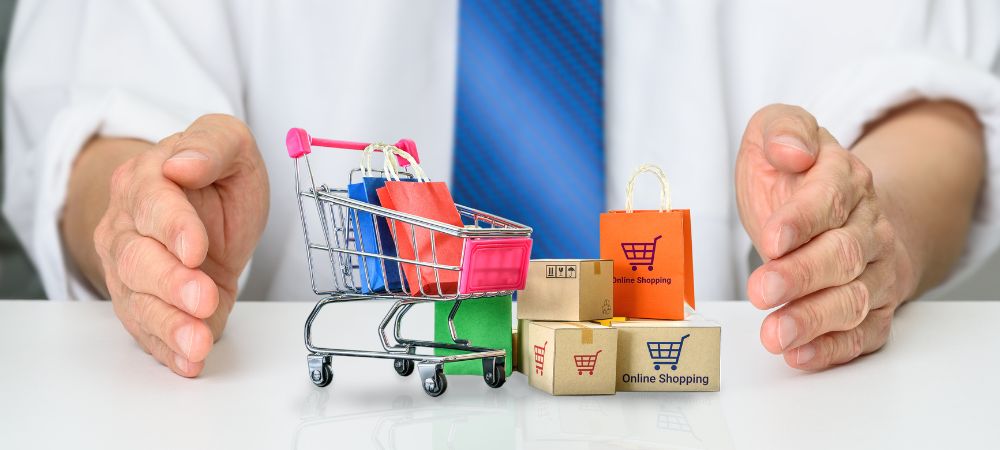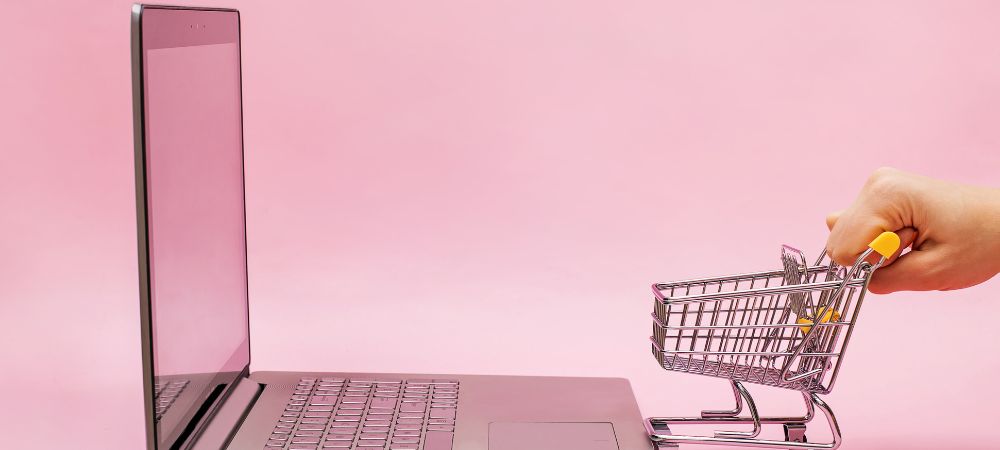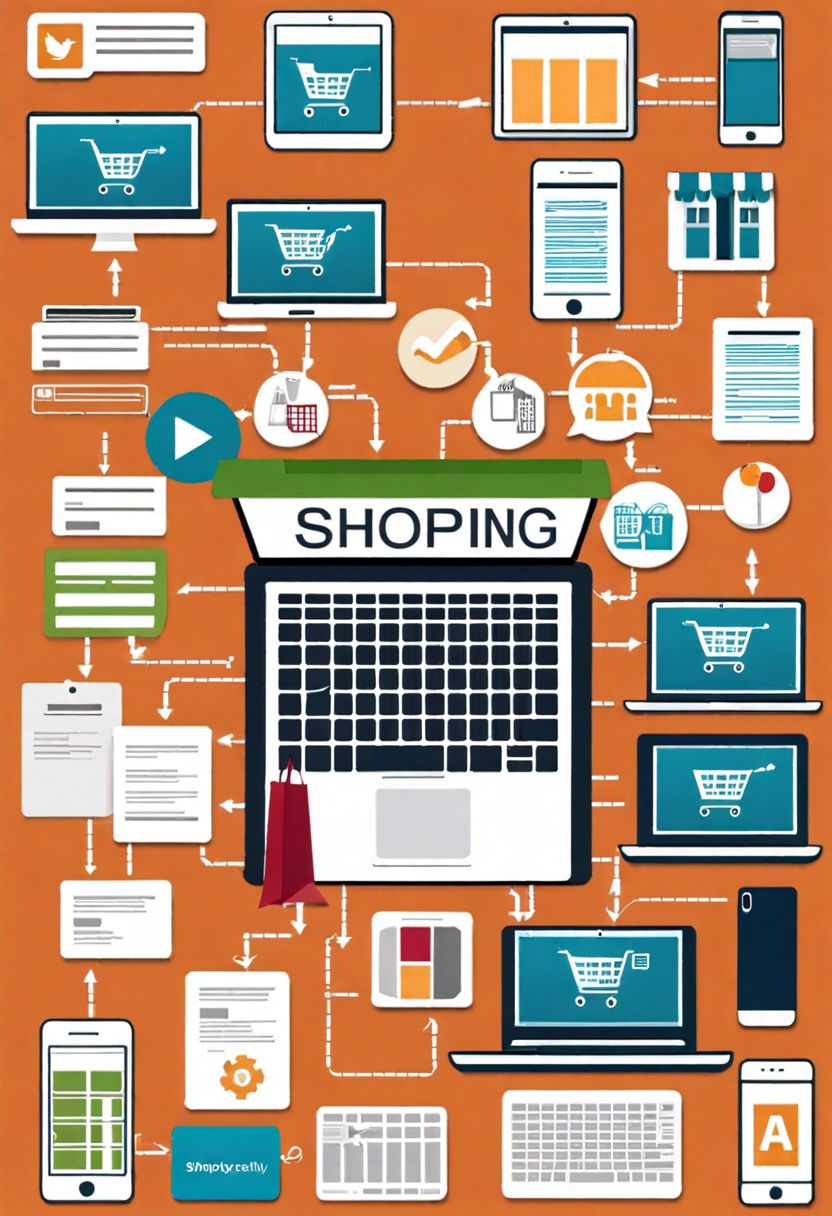

Digital wallets, ain't they something? These nifty little tools have revolutionized the way we handle our money. How do digital wallets work, you ask? Well, let's dive in and untangle this web of modern tech.
First off, it's not like a physical wallet. Receive the inside story browse through here. You won't find any leather or fabric here. Digital wallets are software-based systems that securely store users' payment information and passwords for numerous payment methods and websites. Obtain the inside story click on that. But hey, don't think it's just about storing credit card details; they can hold much more than that! From loyalty cards to tickets and even personal identification documents – you name it.
Now, how does one get started with a digital wallet? It's pretty simple, really. You'd download an app like Apple Pay, Google Wallet or Samsung Pay onto your smartphone or other smart devices. Following that, you'd enter your payment info into the app – this could be debit cards, credit cards or even bank accounts. Oh boy, but don't worry about security too much; these apps use encryption to keep your data safe from prying eyes.
When you're out shopping and it's time to pay, instead of fumbling through your pockets for cash or cards (ugh), you'd simply open your digital wallet app and tap your phone on the merchant's contactless payment terminal. Voila! Transaction complete in seconds flat! Ain't that neat?
But wait – what if you lose your phone? A common concern among users is the safety of their funds in such scenarios. Most digital wallets require authentication like a fingerprint scan or a PIN before making payments. Plus, if you lose your device (heaven forbid!), you can usually lock it remotely using services like Find My iPhone or Android Device Manager.
It's also worth mentioning that peer-to-peer transactions have never been easier with digital wallets around. Imagine splitting the bill at dinner without having to dig up exact change – sweet relief! Apps like Venmo let ya send money directly from one person's account to another's within moments.
However-hold on-digital wallets aren't flawless either; they're not available everywhere yet. Some smaller businesses still haven't caught up with this trend so carrying some form of traditional payment ain't such a bad idea after all!
In conclusion my friends - although there might be bumps along the road - Digital Wallets surely pave way for future convenience by transforming how we handle our finances daily- saving us time & effort while ensuring security remains intact . So why stick only with old ways when new ones offer so much more ease & flexibility ?
Oh boy, where do I even start with the benefits of using digital wallets for online purchases? It's like opening a can of convenience and all these amazing things just spill out. First off, let's talk about security. Who wants to type their credit card number every single time they buy something online? Not me! Digital wallets offer encrypted transactions which means your information is way safer than typing it in manually each time.
But wait, there's more! Digital wallets also make checkout processes super fast. No need to dig through your physical wallet or purse looking for that one specific card you wanna use. Just a couple taps on your phone or clicks on your computer and voila-purchase made!
And don't get me started on how easy it makes tracking expenses. With everything stored digitally, it's so much easier to see where your money's going. You won't have to wade through piles of receipts anymore; all the info's right there in the app.
Another thing many people overlook is the ability to store multiple types of payment methods in one place. Credit cards, debit cards, even gift cards-they can all live happily together in a digital wallet. No more fumbling around trying to remember which card has what balance or which one's expired.
Believe it or not, digital wallets can also save you some money sometimes too! Many apps offer cashback rewards or discounts when you pay using their platform. So not only are you saving time and hassle but you're actually getting some perks too!
Now, let's not ignore accessibility either. For those who find it difficult to handle cash or keep track of physical cards due to disabilities or other reasons, digital wallets offer an incredible alternative that's easier to manage.
Of course, nothing's perfect and there are downsides too-a dead phone battery could leave you stranded without access to funds if you're relying solely on a digital wallet. But overall? The pros far outweigh the cons if ya ask me.
So yeah, while no system's flawless (what ever is?), making the switch-or at least adding a digital wallet option-to your purchasing habits can be quite beneficial indeed!
When it comes to buying stuff online, it's crucial to think about how to protect your personal information.. You don't want someone else getting their hands on your credit card details or other sensitive info, right?

Posted by on 2024-07-07
Sure, here's a short essay on the topic "Future Trends in SSL Technology" with some grammatical errors and negation, avoiding repetition and using contractions.
---
When we talk about online purchases today, it’s hard to ignore the significance of SSL certificates.. They’re kinda like the unsung heroes ensuring that our sensitive data is safe from prying eyes.

Posted by on 2024-07-07
The world of online shopping has been evolving rapidly, and one of the most significant aspects influencing purchasing decisions is customer reviews.. This trend ain't slowing down anytime soon!

Posted by on 2024-07-07
Popular digital wallet platforms have taken the financial world by storm, transforming the way we handle transactions and manage our money. In this essay, we'll take a look at some of these platforms that've become household names.
First up, there's PayPal. If you haven't heard of it, you've probably been living under a rock! PayPal's been around since the late '90s and has grown into one of the most trusted digital wallets out there. It's not just for sending money to friends or paying for eBay purchases anymore; it's also widely used for online shopping because it's super convenient and secure. However, let's be honest: their fees for certain transactions can be quite annoying.
Next on the list is Apple Pay. This one's particularly popular among iPhone users. Apple didn't invent mobile payments, but they sure made them cool! With just a tap of your phone or even your watch, you can pay for groceries or coffee without fumbling through your wallet. It's integrated so seamlessly with other Apple services that people find it hard to resist using it.
Google Wallet (now part of Google Pay) deserves its spot in this discussion as well. Initially launched as Google Wallet, it faced stiff competition but managed to carve out its niche by offering a simple interface that's easy to use. What's great about Google Pay is how it integrates with other Google services like Gmail and YouTube - making everything feel interconnected.
Oh boy, we can't forget about Samsung Pay either! Samsung might not have the same brand loyalty as Apple when it comes to phones, but their payment solution is top-notch. What sets Samsung Pay apart is its ability to work with both NFC (near-field communication) and MST (magnetic secure transmission) technology. This means it'll work almost anywhere you can swipe a card - pretty nifty if you ask me!
Then there's Venmo – owned by PayPal but deserving its own mention because it's hugely popular among younger generations. Venmo's got this social element where you can see what your friends are paying each other for – adding comments and emojis makes splitting bills kinda fun! But hey, don't think it's all sunshine and rainbows; privacy issues have cropped up from time to time.
Last but certainly not least is Cash App by Square Inc., which has gained traction primarily due to its simplicity and versatility in handling peer-to-peer payments as well as Bitcoin trading capabilities! It's like having multiple financial tools rolled into one app.
In conclusion, while these digital wallet platforms offer various features tailored to different needs and preferences, they all share one common goal: making our lives easier when dealing with money matters. So whether you're an Apple enthusiast or a Google aficionado – there's always something out there that'll fit right into your digital lifestyle!


Digital wallets, oh how they've revolutionized the way we handle money! But hey, let's not get ahead of ourselves – they ain't perfect. One thing's for sure though, their security features are nothing short of impressive. Let's dive into what makes these digital vaults so darn secure.
First off, encryption is a big deal. It's like that secret language you had with your best friend in school – no one else could understand it. Digital wallets use super-strong encryption to keep your data safe from prying eyes. When you make a transaction, your info isn't just floating around out there in plain sight; it's all scrambled up and only the intended recipient can decode it. Without this feature, we'd probably be in deep trouble.
Then there's two-factor authentication (2FA). Honestly, if you're not using 2FA by now, you're living dangerously! This nifty feature adds an extra layer of security by requiring not just your password but also something else – usually a code sent to your phone or email. So even if some hacker gets hold of your password, they still can't get into your wallet without that second piece of the puzzle.
Biometric authentication is another cool trick up digital wallets' sleeves. Fingerprint scans and facial recognition might've seemed like sci-fi stuff a few years back, but now they're pretty standard fare. These features ensure that only *you* can access your wallet – unless someone goes full Mission Impossible on you and steals your face or fingerprints (not likely!).
But wait, there's more! Tokenization is another key player here. Instead of transmitting actual card numbers during transactions which could be intercepted and misused - tokens (random strings of characters) are used instead which are useless to anyone who intercepts them because they don't represent any actual value outside the context they're used in.
However-yes there's always a however-they're not invincible! Security breaches do happen occasionally cuz hackers aren't exactly going away anytime soon 😒 . Plus let's admit it-sometimes our own carelessness plays a part too; sharing passwords or losing devices etc., so keeping vigilant oneself isn't optional either!
Finally let's talk about remote locking capabilities which lets users deactivate their accounts remotely if device gets lost/stolen ensuring no unauthorized access happens till retrieved safely again
So yeah folks while these state-of-the-art features make digital wallets safer than traditional methods-it doesn't mean we should throw caution completely outta window! Always stay cautious & updated about latest threats/innovations happening around cybersecurity space 🚀
Setting up a digital wallet ain't as daunting as it might seem. In fact, with just a few steps, you'll be ready to use your digital wallet for all sorts of transactions. It's not rocket science, but hey, let's walk through the process together.
First things first, you gotta choose which digital wallet you wanna use. There's plenty out there like Apple Pay, Google Wallet, Samsung Pay – you name it. Don't just pick one randomly though; think about what works best for your device and needs.
After you've picked your wallet, it's time to download the app if you don't have it already. Most wallets are available on App Store or Google Play Store. So head over there and hit that 'download' button.
Once installed, open the app and get ready to set up an account. You'll need to provide some personal info like your name and email address. Oh! And don't forget to create a strong password - something more complex than "password123".
Now comes the crucial part: adding your payment methods. It's usually straightforward; just follow the prompts in the app to add your credit or debit cards. You might have to enter card details manually or sometimes just take a photo of 'em with your phone camera.
Hold on a sec! Before you can start using the wallet, you'll probably need to verify yourself too. This could mean entering a code sent via text message or email – depends on what service you're using.
Next step? Set up any additional security features offered by the app like fingerprint scanning or facial recognition if available. These make sure nobody else uses yer wallet without permission.
Okay then - almost done! Be sure ta link yer bank account if ya plan on transferring money directly from there instead of using cards all the time.
Finally... test it out! Try paying for something small at a store that accepts digital payments or send money to a friend who's also got a digital wallet setup.
And voila! You've got yerself set up with a digital wallet in no time flat!
Remember folks - keep an eye on yer accounts regularly for any suspicious activity since even in this tech-savvy world we live in, nothing's completely foolproof yet!


Oh boy, digital wallets! They're a real game-changer in the way we handle our money, right? But let's be honest, they ain't without their fair share of headaches. So, let's talk about some common issues and troubleshooting tips for digital wallets that might just save you from pulling your hair out.
First off, one of the most annoying problems is connectivity. You'd think with all this fancy tech, connecting to the internet should be a breeze. Yet here we are! Sometimes your wallet app just won't connect to the server. It's super frustrating when you're trying to pay for something and it keeps saying “connection error”. If this happens, don't panic. Make sure your Wi-Fi or data connection is stable. Turn off and on your network; sometimes it's as simple as that.
Now let's dive into security concerns – yikes! Digital wallets are supposed to be secure but nothing's perfect. People often neglect updating their apps which can lead to vulnerabilities. If you ain't updating regularly, you're literally asking for trouble. Always ensure your app is updated to the latest version because updates usually come with security patches.
Another biggie is forgotten passwords or PINs. This can be a real nightmare because getting locked outta your own money feels like an episode of Black Mirror or something! If you forget your password or PIN, most apps have a recovery process but it can take time and patience – two things no one has enough of nowadays! Keep those recovery phrases safe and maybe not rely solely on memory?
Let's not ignore compatibility issues either. Not all digital wallets work seamlessly across different devices and platforms which can be quite irritating if you've got multiple gadgets lying around. Before downloading any wallet app, check if it's compatible with whatever device you're planning to use.
Payment failures also grind my gears! Imagine standing at the checkout line and seeing "transaction failed" pop up on your screen repeatedly – it's mortifying! Often times these errors happen due to insufficient funds (oops!) or temporary glitches in the system itself. Double-check everything before making a transaction: balance, recipient details etc., so there won't be any unpleasant surprises.
Lastly – account synchronization problems can create quite a mess too! Some folks notice discrepancies between their bank account balance and what shows up on their digital wallet app - totally nerve-wracking stuff! To avoid such situations make sure both accounts are synced properly by following instructions provided by both service providers closely.
In conclusion (phew!), while digital wallets bring convenience galore they aren't flawless yet; technical hiccups do occur now n then but fret not – most issues have relatively straightforward fixes if approached calmly n methodically without losing one's cool over petty inconveniences... Happy spending (or saving)!
Digital wallets, oh how they've changed the way we handle money! It's no longer a world where folks are fumbling around for cash. But let's not get too ahead of ourselves; digital wallet technology isn't done evolving yet. There are some fascinating future trends that are set to shake things up even more.
Firstly, let's talk about biometric security. I mean, who wouldn't want their wallet to recognize them just by a glance or touch? Facial recognition and fingerprint scanning aren't new concepts, but they're bound to get way better. We're talking about ultra-secure transactions where even thinking about fraud is pointless. But hey, it's not like these systems are perfect right now - there's still room for improvement.
Then there's the whole idea of smart contracts integrated within digital wallets. Imagine paying your rent or splitting bills with friends without lifting a finger – literally! Smart contracts can automatically execute payments based on pre-set conditions. Yet, don't think this'll replace human interaction entirely; it just makes life a bit simpler.
Now, let's dive into cryptocurrency integration. You might think Bitcoin and Etherum have already made their mark in digital wallets, but hold your horses! The future could see more seamless ways of exchanging various cryptocurrencies with traditional currencies directly in your wallet app. It won't be surprising if one day you're buying groceries with Dogecoin!
Artificial intelligence (AI) also has its paws all over the future of digital wallets. Picture this: an AI-driven financial advisor built right into your wallet app. This little helper could analyze spending habits and offer personalized saving tips or investment advice tailored specifically for you. Though honestly, sometimes AI can be a bit... off-track? Don't expect perfection overnight.
And how about augmented reality (AR)? Yes, you heard me right! AR could revolutionize shopping experiences by overlaying information onto physical products through your smartphone screen while making payments directly via your digital wallet – all in real-time! Unfortunately, AR tech ain't cheap and might take awhile before becoming mainstream.
Oh boy, last but definitely not least is interoperability between different platforms and ecosystems. No more juggling multiple apps for different services; imagine having one cohesive digital wallet experience across various platforms from online marketplaces to public transportation systems.
In conclusion, the future trends in digital wallet technology promise convenience wrapped in layers of advanced security and innovation – though it's not gonna be flawless from the get-go. From biometrics to AI advisors and beyond, our relationship with money management is on the brink of something pretty darn amazing!